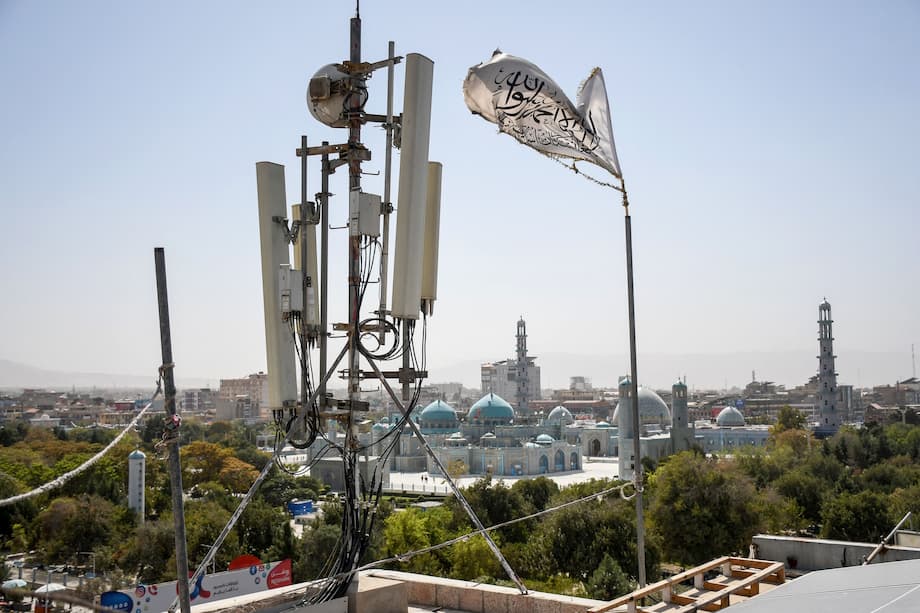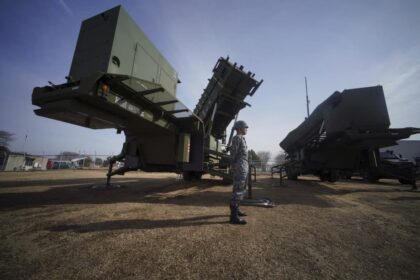How a 48 hour shutdown froze a connected nation
Afghanistan went offline without warning for two days this week as the Taliban ordered a nationwide cut to the internet and phone networks. Starting Monday evening and lifting Wednesday (September 29 to October 1, 2025), the blackout severed contact between families, halted business, delayed aid, and grounded flights. For a country of about 43 million, connectivity has become central to daily life. The sudden loss revealed how deeply people, public services, and relief operations depend on digital links.
- How a 48 hour shutdown froze a connected nation
- What triggered the blackout
- Flights, banks and basic services stalled
- Aid operations strained during quake recovery
- Women and girls lost a lifeline
- Inside the networks, how Afghanistan went offline
- Information control and international law
- On the ground, fear and anger replace routine
- Will more blackouts follow
- Key Points
Phones did not ring, messaging apps failed, and social media feeds went silent. Banking systems faltered. Some branches opened with limited cash while others shut entirely. Afghan diaspora communities could not reach relatives back home. Many residents drove toward border areas with Pakistan or Iran in search of a usable signal. The return of service brought relief, though many spoke of lingering anxiety that more blackouts could arrive without notice.
The shutdown followed weeks of regional restrictions that began with fiber optic cuts in northern provinces. Officials had framed the effort as a campaign against vice and immoral behavior. The nationwide move marked the first time the current rulers had switched off most of the country at once. It also showed the leverage authorities hold over the backbone of Afghanistan’s communications system.
What triggered the blackout
Officials did not provide a clear public explanation for the countrywide shutdown. The move tracked with a months long morality drive led from the top of the movement, including earlier orders to sever fiber optic links in selected provinces. Internet watchdogs reported a stepwise disconnection across multiple networks that culminated in a total blackout. Telephone service, which rides on the same fiber backhaul in much of the country, also dropped out or degraded sharply.
Connectivity began collapsing in mid September. By the end of the month, access in Kabul, Herat, and Kandahar plunged to a fraction of normal levels. Authorities set deadlines to limit or turn off 3G and 4G mobile data, with only 2G service left in pockets. The final switch off reached the capital late Monday, then spread nationwide by Tuesday morning.
Flights, banks and basic services stalled
The shutdown rippled through aviation. Kabul International Airport saw operations slow to a stop as incoming flights were cancelled and departures delayed or marked unknown. Passengers were told services might resume only after the blackout lifted. With air traffic data feeds disrupted and airlines unable to confirm schedules, the terminal was quiet.
The banking sector also struggled. Payment systems that rely on internet connectivity faltered. Branches faced crowds of customers trying to withdraw cash, yet many could pay out only small sums. In southern provinces some banks did not open at all, and private money exchangers said they could not process transfers. Remittances from relatives abroad, a crucial income stream for many households, stalled.
Hospitals, pharmacies, and clinics reported communication problems. Routine coordination, ambulance dispatch, and access to digital medical records slowed or stopped. Newsrooms could not reach field reporters by phone. Broadcasters warned audiences to expect service interruptions on radio and television as studio equipment and distribution links depended on networks that were offline.
Aid operations strained during quake recovery
The timing could not have been worse for humanitarians. Relief teams were still assisting communities hit by a 6.0 magnitude earthquake in eastern regions last month that killed around 2,000 people, injured 3,600, and damaged roughly 8,500 homes. Loss of connectivity severed contact with aid workers in remote areas, blocked real time data sharing, and delayed deliveries.
Indrika Ratwatte, the United Nations humanitarian coordinator in Afghanistan, described how the shutdown cut the organization off from its field teams and communities. He spoke from Kabul through a fragile satellite link, noting that connectivity for regular operations had collapsed in much of the country.
“We do not have connectivity with them,” he said. “The rest of the country is completely cut off right now, by and large.”
Aid agencies warned that services ranging from vaccination campaigns to supply chain management would suffer. Winter is already settling in. Shelter insulation, warm clothing, and fuel distribution depend on communications to reach the right families in time. When phone and data lines go dark, relief turns slower and less precise, and the cost of getting help to isolated valleys rises.
Women and girls lost a lifeline
For women and girls, the outage hit a fragile lifeline. With schooling barred beyond the primary level and many professions closed, online classes and remote work had become one of the last avenues to learn and earn. The blackout silenced lecture streams, tutoring sessions, and study groups. It also blocked the women led outlets and civil society networks that had shifted to digital platforms.
Laila Rahimi, a 27 year old in Kabul studying for a masters degree online, said the shutdown felt like a second expulsion from public life.
“After banning schools and jobs for women, the internet was all we had, and they took that too,” she said.
Women journalists described how they could not reach sources or editors. A founder of a women run newsroom said her team abroad struggled to keep publishing while their colleagues inside the country went silent. Humanitarian workers told of running errands in the city when mobile and SIM services cut out, leaving them unable to coordinate or check on family members. Even after service returned, the fear of another sudden cutoff lingered.
Inside the networks, how Afghanistan went offline
Afghanistan’s communications backbone consists of a national fiber optic network built over many years, which ties provincial capitals, mobile towers, government offices, and exchange points together. When authorities ordered fiber routes to be severed, the effect cascaded. Towers lost backhaul. Core routers could not exchange traffic with international gateways. Mobile internet dropped from 4G and 3G to isolated 2G pockets, then disappeared in many places.
Unlike in wealthier markets with redundant routes, most telephone calls in Afghanistan rely on the same fiber backhaul that carries internet data. If that backhaul goes down, even voice service becomes unreliable. Radio and television distribution also depends on digital links for studio to transmitter connections, so broadcasts faltered as well.
Timeline of the cuts
Regional restrictions began in mid September in Balkh, Badakhshan, and Takhar in the north, then reached Kandahar and Helmand in the south, Nangarhar in the east, and Uruzgan in the center. The final stage arrived in Kabul late on Monday, when fiber links went down and carriers signaled that services would remain offline until further notice. Internet measurement groups recorded traffic plunging toward zero by Tuesday.
What about satellites and VPNs
Some Afghans tried to keep lines open by traveling to border towns that can see wireless signals from neighboring countries. Others attempted limited use of satellite connections. Starlink service is not officially available in Afghanistan. Reports suggested that a small number of users accessed it through covert equipment or gray market channels, but technology experts caution that such workarounds carry legal and personal risks under current rules. Virtual private networks cannot operate without a path to the internet, so they offered no relief during a full blackout.
The shutdown also exposed affordability gaps. Mobile data can cost far more than the average household can pay. Students described paying the equivalent of tens of dollars for large data packs, while shared home Wi Fi, where available, costs less but is far from universal. When those options stop working, study and work plans collapse.
Information control and international law
Rights organizations and legal experts say blanket internet shutdowns violate fundamental freedoms. Under international human rights law, including Article 19 of the International Covenant on Civil and Political Rights, people have the right to seek, receive, and impart information through any media of their choice. Restrictions must be lawful, necessary, and proportionate. A total blackout fails that test by silencing everyone rather than targeting specific harms.
The United Nations mission in Afghanistan urged authorities to restore nationwide internet and telecommunications access, warning that the cut threatens economic stability and deepens an already severe humanitarian crisis. A group of UN appointed experts later condemned broader online restrictions, noting fresh limits on major social media platforms days after the blackout ended.
Amnesty International called the move reckless, saying it would harm delivery of aid, healthcare, and essential services at a time when nearly half the population needs support. Human Rights Watch warned that cutting the internet robs people of education, work, and a voice, with women and girls bearing the heaviest burden. Such shutdowns also make it harder to document rights abuses because witnesses cannot get information out.
On the ground, fear and anger replace routine
Daily life in the capital slowed. Delivery services that depend on mobile communications could not take orders. Markets were quiet. One Kabul shopkeeper described watching his business freeze without the ability to call customers or drivers.
“We are blind without phones and internet,” said Najibullah, a 42 year old shopkeeper. “All our business relies on mobiles. The market is totally frozen.”
Elsewhere, a money changer in Helmand said bank branches in his area were closed and he could not settle payments. A university student who had shifted to online learning after her midwifery course was halted last year said the blackout made the world feel dark. Journalists resorted to sending camera crews directly to interviewees because they could not call to arrange times. Newsrooms lost contact with their bureaus around the country.
Families abroad endured sleepless nights trying to reach parents and siblings. Remittances paused. Teachers lost touch with students. Even simple tasks, like confirming a doctor appointment or coordinating a delivery, proved impossible.
Will more blackouts follow
Authorities in several provinces have argued that cutting fiber links is a way to curb online immorality. Local officials have floated the idea of building alternative systems for essential needs, though details remain vague. After connectivity returned, new restrictions appeared on popular social media platforms across multiple providers. Many Afghans worry that periodic shutdowns and platform blocks will become a new normal.
Repeated outages would carry a steep cost. Business systems rely on stable links to suppliers and customers. Airlines need predictable connectivity for flight planning, crew communication, and safety. Aid agencies use digital tools to target assistance, track supplies, and keep staff safe. Every day without service imposes losses that are hard to recover. Investors hesitate when core infrastructure can be switched off with little notice.
There are safer and more effective ways to address harms online than unplugging an entire nation. Targeted content policies, transparent due process, and independent oversight give authorities tools to address genuine threats while preserving access to information. Afghan civil society groups, educators, and entrepreneurs have asked for a seat at the table to shape policies that keep communities safe without silencing them.
Key Points
- Afghanistan experienced a nationwide shutdown of internet and phone services for roughly 48 hours (September 29 to October 1, 2025).
- Authorities did not give a clear reason; the action followed weeks of fiber cuts in several provinces tied to a morality campaign.
- Internet watchdogs measured connectivity falling to near zero and reported telephone service disruptions tied to fiber backhaul.
- Aviation was disrupted, with cancelled flights to and from Kabul and terminals reporting minimal operations during the outage.
- Banking and payments faltered; remittances, e commerce, and routine business communication paused or slowed sharply.
- Humanitarian operations suffered during earthquake recovery efforts, with UN teams losing contact with field staff and supply chains delayed.
- Women and girls lost access to online education and remote work, cutting one of their last avenues for learning and income.
- Reports after service returned indicated new restrictions on major social media platforms across multiple providers.
- UN officials and rights groups called the blackout disproportionate and urged immediate restoration of full connectivity.
- Repeated shutdowns would deepen economic stress, undermine aid delivery, and isolate Afghan families from relatives abroad.












